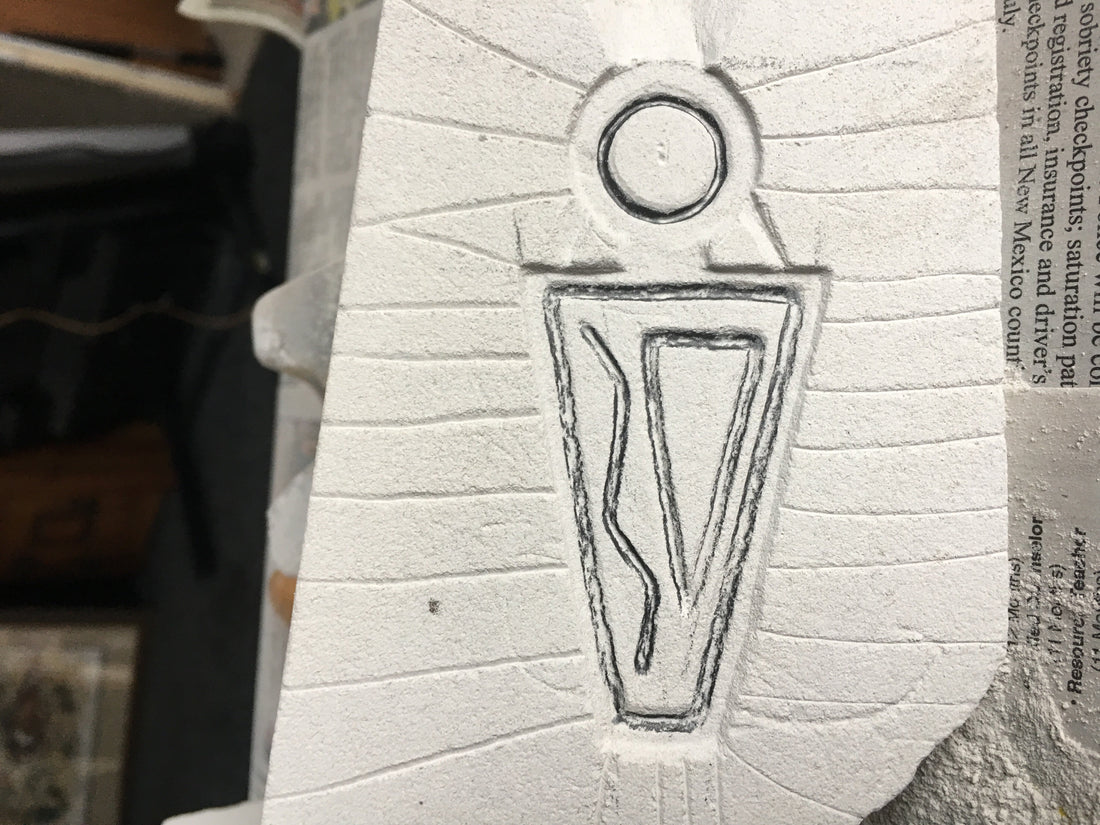
Tufa (pronounced toofa) is a type of porous volcanic stone that can be found regionally in the American Southwest. It's widely available on the Navajo reservation. Casting jewelry using a mold hand-carved of the volcanic tufa material is a traditional jewelry making technique developed by some of the first Navajo silver makers in the 1870's. According to Washington Matthews, whose observations on Navajo Silversmiths were published in the Second Annual Report to the Smithsonian Institution from the Bureau of Ethnology, 1880-1881, "they cut molds from soft sandstone and poured melted ingots into these hollows for casting."
To create a tufa cast piece of jewelry is a precise and lengthy process. Native American artisans first source tufa rock by cutting it from their special,
sometimes secret local cache. They then cut the block of tufa in two pieces, which fit tightly together forming a mold.

Navajo silverworker Grey Moustache, who was interviewed by John Adair for his book The Navajo and Pueblo Silversmiths, speaks of the fragility of tufa casting: ". . . forty years ago (1898), when I made a trip up to Sunrise Springs. I saw some white rock on the side of a hill and I thought that it might make good molds for my silver, so I got some of it and made a cast for a ketoh. But that stone was too soft and cracked all to pieces. Then I went back a second time and got some more, and this time the stone was just hard enough, and I made a good ketoh in that mold."
Today, some Navajo and Pueblo jewelers still tufa cast their work. Navajo artist Ira Custer is one of these modern-day silverworkers creating in the old style. An expert in the technique, we would like to thank him for providing us with these photos of his tufa casting process.
We're so fond of this historic Native American method of creating tufa cast jewelry, and we love the resulting pieces it makes.



